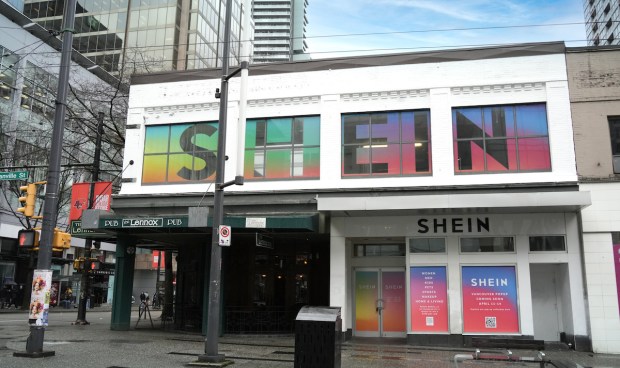Digital Merchants Tap Physical Pop-Ups to Drive Deeper Customer Connections

As eCommerce merchants look for ways to win the trust of and build connection with their shoppers, some are turning to pop-ups to create real-world relationships with shoppers without sinking the high cost into permanent brick-and-mortar stores.
Take, for instance, fast fashion giant Shein. The digital retailer, which has been leveraging pop-ups for some time now, on Monday (April 1) announced it is extending its efforts in the space to the Great White North with its first such limited-time shop in Vancouver. The pop-up will run from April 11 to April 14.
Shein is far from the only digital merchant looking to pop-ups to connections with consumers. As Pinterest looks to grow its eCommerce penetration, the social media platform partnered with Abercrombie & Fitch on a pop-up weddingwear event at Los Angeles’s Goldwyn House on Wednesday (March 27), as the clothing retailer announced Monday.
Pop-up stores provide an opportunity for customers to experience the brand in a tangible way. They can see, touch, and interact with products, which enhances brand perception and creates a memorable experience. Plus, Brands can engage with customers on a more personal level in a pop-up setting. They can offer personalized recommendations and one-on-one interactions that cater to individual preferences.
Even digital brands that do not focus on selling products are leveraging the pop-up shop model to drive loyalty. Last summer, for instance, Netflix opened its own pop-up restaurant.
Consumers want to feel connected to merchants. The PYMNTS Intelligence report “The Online Features Driving Consumers to Shop With Brands, Retailers or Marketplaces,” created in collaboration with Adobe, which drew from a survey of more than 3,500 U.S. consumers, revealed that three-quarters of consumers consider trust to be a pivotal factor in their choice of eCommerce merchant.
Pop-up stores can serve as a gathering place for loyal customers, allowing them to connect with each other and with the brand’s representatives. This sense of community can foster loyalty and strengthen the brand’s relationship with its customer base. In fact, findings show that young shoppers especially seek out brick-and-mortar retail environments as social hubs.
Moreover, direct interaction with customers in a pop-up store can allow brands to gather valuable feedback and insights. They can observe customer behavior, collect data on preferences and purchasing patterns, and use this information to improve products and services.
Brick-and-mortar stores continue to be key to most consumers’ shopping experiences, according to PYMNTS Intelligence’s “2024 Global Digital Shopping Index: The Rise of the Click-and-Mortar™ Shopper and What It Means for Merchants,” commissioned by Visa Acceptance Solutions. The study, which drew from a survey of nearly 14,000 consumers across seven countries, found that 71% of consumers prefer to interact with brick-and-mortar stores at some point in their shopping journey.
Specifically, 1 in 3 shoppers prefer to make purchases the old-fashioned way. Another 14% prefer to place orders digitally for in-store pickup, and 25% prefer to shop in stores with the assistance of digital technologies.
As such, retailers are increasingly noting the need to offer consumers access both digitally and physically.
“We don’t think there’s an ‘order’ of store and then digital, or digital and then store [journeys],” Walmart Vice President of Omni Services and Capabilities, U.S., Julia Unger told PYMNTS’ Karen Webster in an interview last year. “We want to make sure we are present where the customer is and where their preferences are.”
